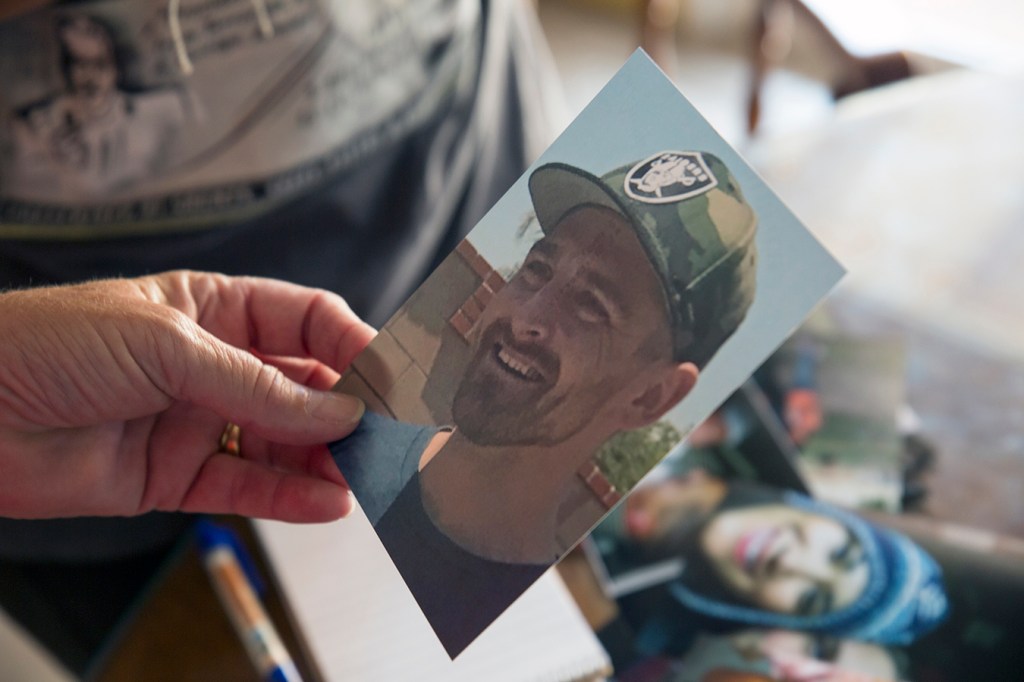BAKERSFIELD, Calif. — The police report is all David Cole Lang’s family has to describe his last moments on Earth.
Fifty pages of officer narratives and witness interviews filled with grisly detail, it lacks any explanation for his death. Ten months later, Lang’s widow, Monique, says she still has no clue as to why the 33-year-old combat veteran and father who struggled with opioid addiction ended up fatally shot by a doctor whom — as far as Monique knew — he hadn’t seen in over a year.
“I didn’t understand why he was there,” she said. “I still don’t.”
On that April evening last year, according to interviews in the report, Lang yelled and cussed at the addiction and pain treatment doctor, Edwin Zong, in his office, and leapt across a desk to punch him repeatedly. Hearing the doctor scream for help, the last patient waiting to see Zong that day ran to open the door. He told police he found Lang standing over Zong, curled in a fetal position on the floor, his face covered in blood and “the fear of a child in his eyes.”
“Hey!” the patient yelled.
When Lang turned toward the doorway, Zong told police, the doctor opened a desk drawer and grabbed a handgun. He fired three or four times. One bullet tore through the blood vessels in Lang’s neck. He staggered outside, collapsed in a parking lot and died.
Local authorities concluded that Zong had acted in self-defense, and he faced no charges. In an email to Kaiser Health News, the doctor declined a request for an interview but said he believes he was targeted for robbery. “I was lucky I wasn’t killed,” he wrote. “Treating addiction is a very tough job, many doctors won’t do it.”
The tragedy that played out in Zong’s office speaks to a dangerous trend: In many parts of the United States, the number of people addicted to opioids far exceeds the capacity of doctors willing and authorized to treat them. That is particularly true when it comes to professionals like Zong who dispense Suboxone or Subutex, both formulations of buprenorphine — widely considered the optimal addiction treatment because it all but erases opioid withdrawal symptoms without creating a significant high.
With tens of thousands of Americans dying annually from opioid overdoses, the Food and Drug Administration recently signaled that it is open to expanding the number of drugs available to ease withdrawal and reduce cravings, but access to prescribers remains a problem even for the drugs that already exist.
One reason for the shortage of providers is that doctors must take eight hours of training to prescribe the medication and apply for a waiver from the federal Drug Enforcement Administration, because the medicine is itself an opiate. Few doctors are willing to check all those boxes and take on the sometimes difficult patients who seek the drug.
Patients addicted to heroin or prescription opioids like oxycodone or fentanyl suffer severe withdrawal — sweats, tremors, anxiety — and are often desperate for medication-based treatment to wean them from the drugs or at least quell their symptoms. For the cash-strapped patients, the cheaper the better.
Doctors who accept these patients, whether motivated by profit or compassion, can become overwhelmed, seeing far more than their offices can handle, opening the door to chaos and lawlessness. More problematic is that some clinics, like Zong’s, offer a mix of services — treatment for both opiate addiction and pain. Patients being prescribed potentially dangerous narcotics are mixed in the waiting area with those struggling to kick addiction.
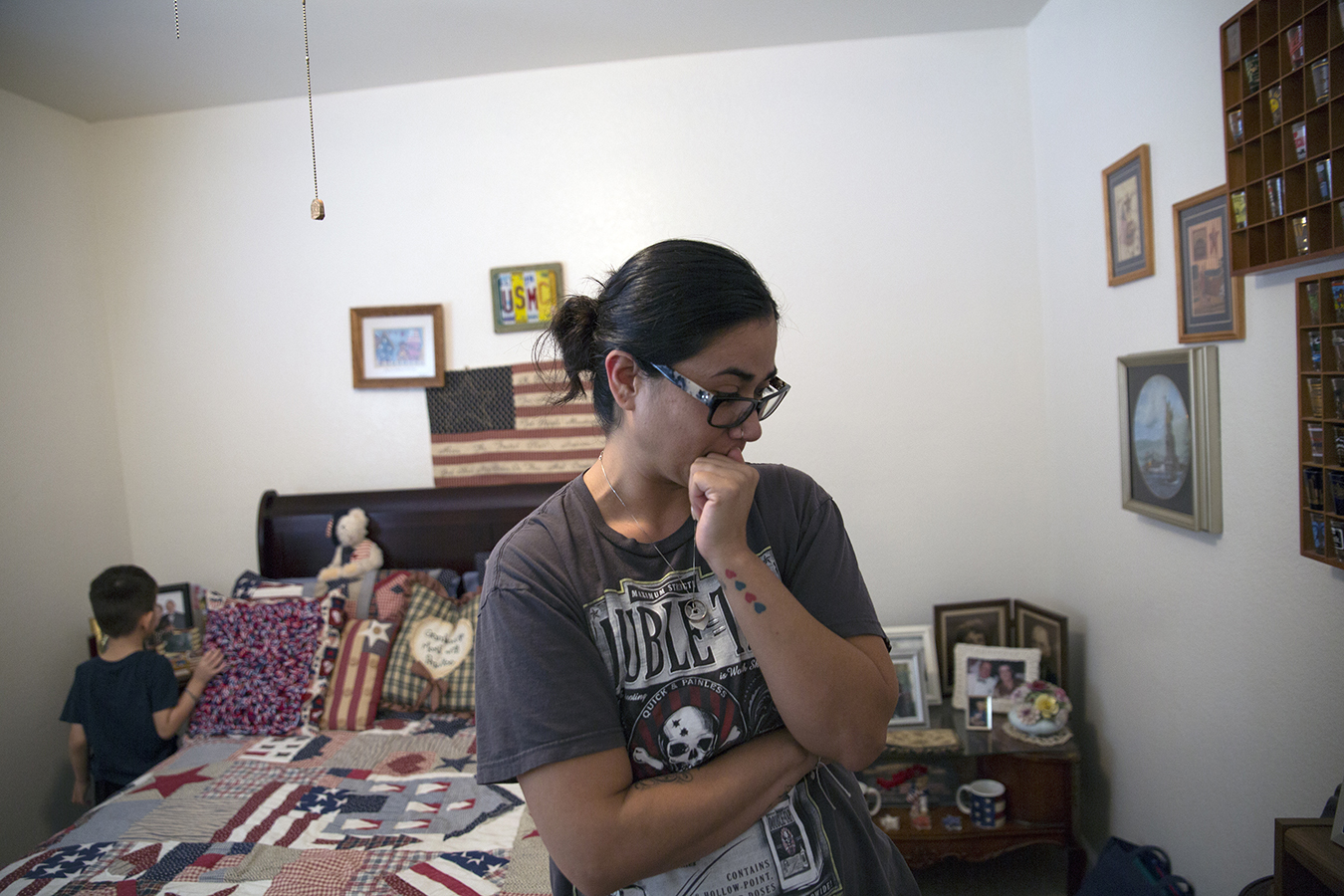
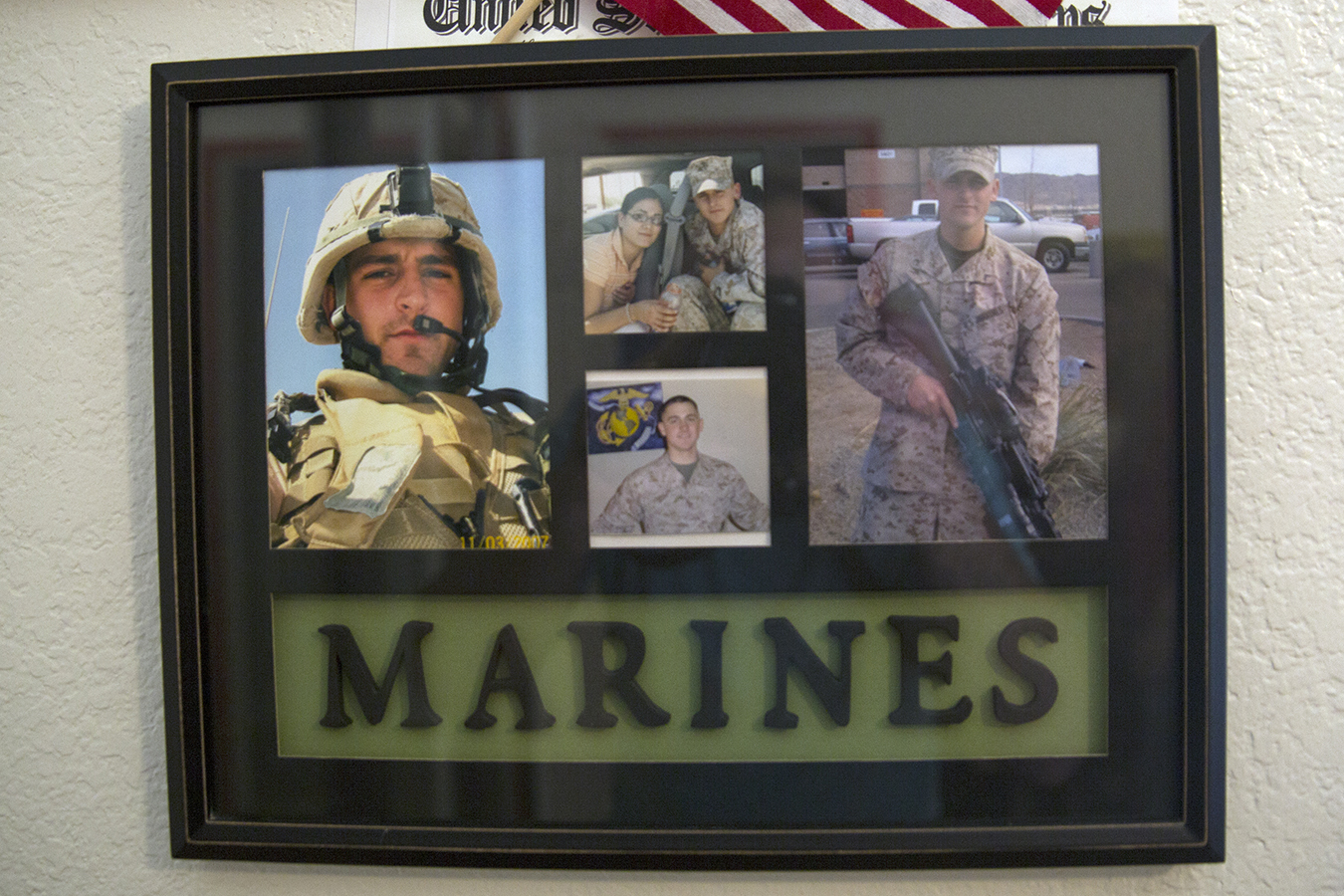
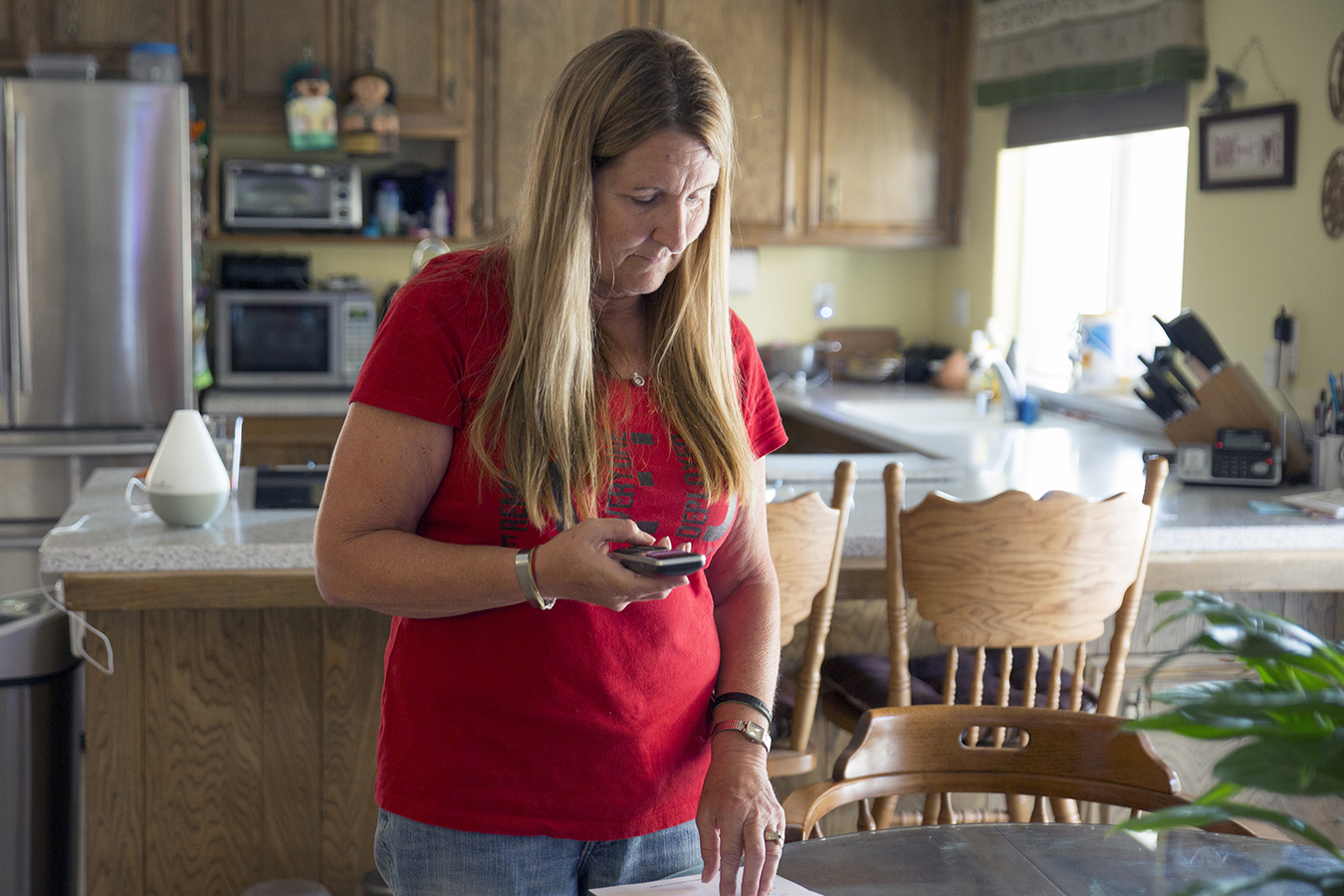
Several years ago in Vermont, which pioneered buprenorphine treatment, some small practices rapidly swelled to 600 or 700 patients each, said Dr. Richard Rawson, an experienced addiction researcher at the University of Vermont. Doctors sometimes prescribed more than their authorized limit, failed to test patients for drug abuse and — wittingly or not — fostered illegal sales, Rawson said.
“We know that when you have those types of practices where you bring large numbers of addicted individuals together it produces a mess,” he said. “People are selling drugs in the parking lot and all kinds of wacky stuff like that.”
Inevitably, some patients relapse. Some become angry if they don’t get what they came for. A solo practitioner like Zong — who by many accounts had few employees, a tendency to work late on his own and a high cash intake — faces security risks.
Zong was concerned enough to stow a gun in his desk drawer. “I keep a gun in my office for self-protection,” he said in his email.
Long Lines, Short Appointments
In California, demand for buprenorphine has only grown with the opioid epidemic and recent changes to Medi-Cal, the state’s Medicaid program, which have made it easier and quicker for low-income people to get the drug. The program was expanded under the Affordable Care Act to cover more adults (3.8 million) and more drug treatment.
In addition, beginning in June 2015, doctors were no longer required to get prior approval from the Medicaid program each time they prescribed buprenorphine.
Within seven months, claims jumped 100 percent, according to the state.
Zong, an osteopathic physician who had trained in internal medicine in New York, opened his Bakersfield practice in 2007. Situated next to a marijuana dispensary, it was a one-stop shop for pain management, addiction treatment and acupuncture. Though Zong’s medical training didn’t focus on those areas, he had the necessary DEA waiver to prescribe buprenorphine by 2010, records show.
Zong had a reputation for writing scripts, cheap and fast, according to numerous interviews with former patients, drug treatment professionals and pharmacy employees in the area. Lines of sometimes-agitated patients stretched from the waiting room into the parking lot, the street and the dirt lot across the road, patients and neighbors said.
If the wait was lengthy, the appointments weren’t, the patients said.
“When I walked in the first time,” said Brian Adams, a former patient, “[Zong] said, ‘What’s going on?’ I said, I’m a heroin addict. I need help. He said ‘OK, I’ll write you a prescription for Suboxone.’”
No intake. No drug testing. No counseling. “I was in and out in five minutes,” Adams said.
The price for the visit ranged from $80 to $100 cash to secure the medicine, patients said — far cheaper than anywhere nearby.
Federal regulators say buprenorphine should be “part of a comprehensive treatment plan that includes counseling and participation in social support programs.”

Dr. Edwin Zong closed his practice after the fatal shooting, leaving a handwritten notice on the door. He remains licensed to practice in good standing but says he won’t return. Neighbors say patients still come by looking for him. (Brian Rinker for Kaiser Health News)
There was an option like that within a few miles of Zong’s office: Aegis Treatment Centers, which runs opioid treatment clinics closely regulated by the government. The clinics required services including intake, urine testing and counseling for opioid treatment.
From a hard-up patient’s perspective, Aegis had another downside: It had not yet been approved to accept Medi-Cal for buprenorphine, which was dispensed on-site as take-home pills. The range of services and medication costs nearly $700 for those without insurance, although a limited number of discounts are available to the poor.
Zong’s Medi-Cal patients had it easier: Their freshly issued scripts were covered at local pharmacies.
Anger And Suspicion
Zong had good reasons to be concerned about security. He’d had a handful of break-ins at the clinic, his vehicle and home — one recently, according to the police report.
At some point, he became licensed to carry and conceal a firearm. Adams said he once saw him pull it out when Adams got confrontational.
Angry that Zong wouldn’t prescribe him an anti-anxiety medication, “I stood up and was like ‘Man, [expletive] you,’” Adams said. Zong pulled out his gun and placed it on the table in front of him, Adams said, and he quickly sat back down.
Patients and pharmacists said Zong sometimes did add addictive anti-anxiety drugs like Xanax to buprenorphine prescriptions for people presumably seeking to escape addiction. Besides creating the potential for further drug abuse, the combination can be deadly, experts say.
Records of Medi-Cal claims obtained by Kaiser Health News show that, in addition to treating patients with buprenorphine, Zong prescribed significant amounts of highly addictive opioids, including oxycodone and hydrocodone, as well as habit-forming anti-anxiety medications. They do not show what combinations of drugs were offered each patient.
Staffers at three pharmacies in the area said they were concerned about peculiarities in Zong’s prescriptions or drug-seeking behavior among his patients.
Myron Chang, a pharmacist at the Walgreens at H Street and Planz Road in Bakersfield, said Zong’s prescriptions “were suspicious.” Staffers noticed odd quantities of pills prescribed — 43, 46, he said. Usually, doctors call for 30 or 60 to match a daily dose for a 30-day month, Chang said.
Chang added that Zong’s scripts sometimes included a potentially dangerous cocktail of sleeping pills, narcotics and anti-anxiety medications. He showed a reporter one of Zong’s 2013 prescriptions for Subutex and Xanax.
“We just stopped taking his scripts,” Chang said.
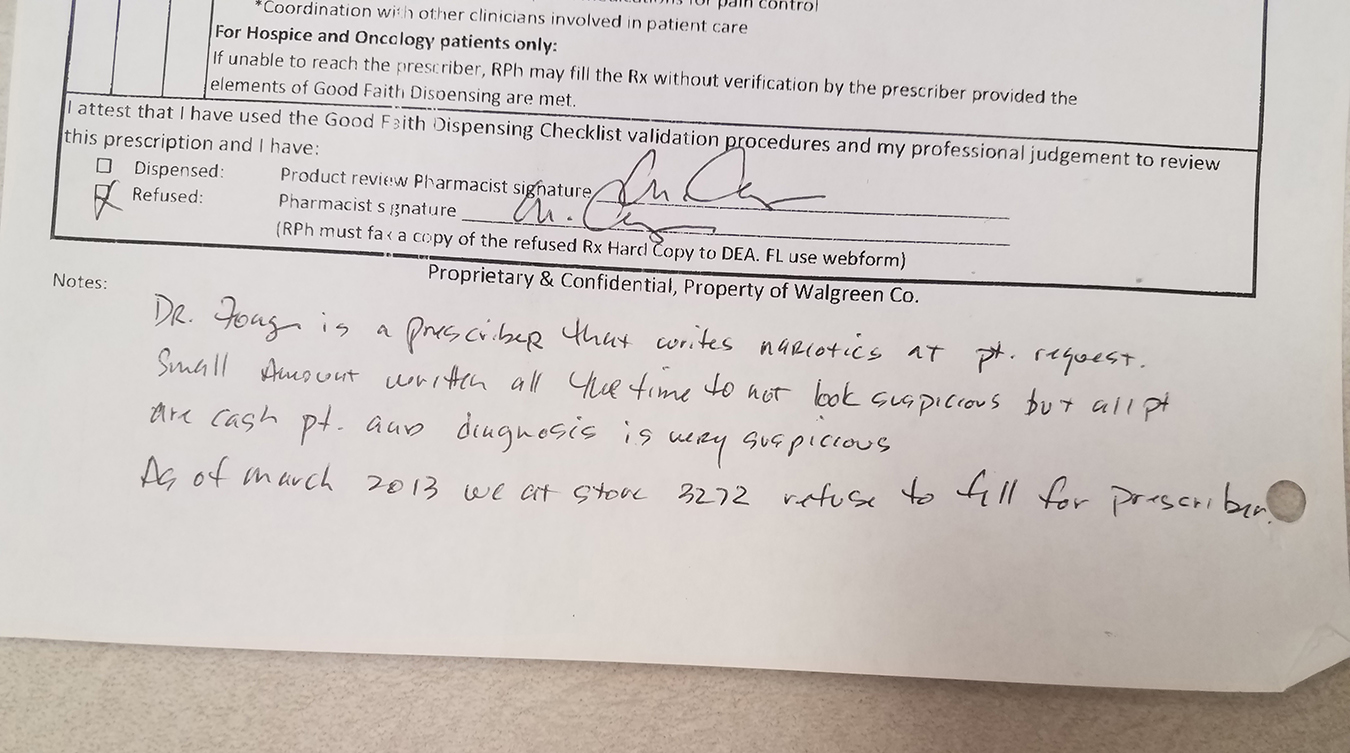
In a 2013 internal memo at a Walgreens pharmacy in Bakersfield, Calif., a pharmacist calls the prescriptions of Dr. Edwin Zong “suspicious” and informs staffers the store will not fill his prescriptions. (Brian Rinker for Kaiser Health News)
Not The Same Man
After the killing, police found a ski mask, a black hoodie and a recently used meth pipe in Lang’s car, according to their report. Witnesses reported to police that Lang came into the offices saying “something about money” or that he was “waiting on his money.”
Court records show he had pleaded no contest for misdemeanor burglary in 2014 and served three days in jail.
Lang’s family is skeptical that Lang was trying to rob Zong. They acknowledge, however, that he was not the man he used to be.
When Monique met Cole, as he was called, she was still in high school. He was an outgoing and funny 19-year-old, with beautiful green eyes and a sharp wit. In short order, they married and he shipped out to Iraq. Then came two more tours, in Iraq and Afghanistan. One explosion, then another, nearly killed him.
When he came home to his wife and baby daughter, he “was a lot different, especially around family functions,” said Monique Lang. He wouldn’t want to go, and if he did, he was quiet and remote. “I was like, ‘This isn’t you. What is going on?’ He never would say.”
In 2009, after Monique discovered money missing from the couple’s bank account, her husband came clean: He was hooked on opioids. From then on, it was a roller coaster of pills, heroin and rehab. In the middle of it all, they had a son, now 4.
Lang’s family said the former Marine was in constant pain, physically and mentally. He had a severe back injury. He screamed in his sleep. His daughter, now 10, would sleep on the couch downstairs, to escape the sound.
He secretly wrote suicide notes to his wife and kids.
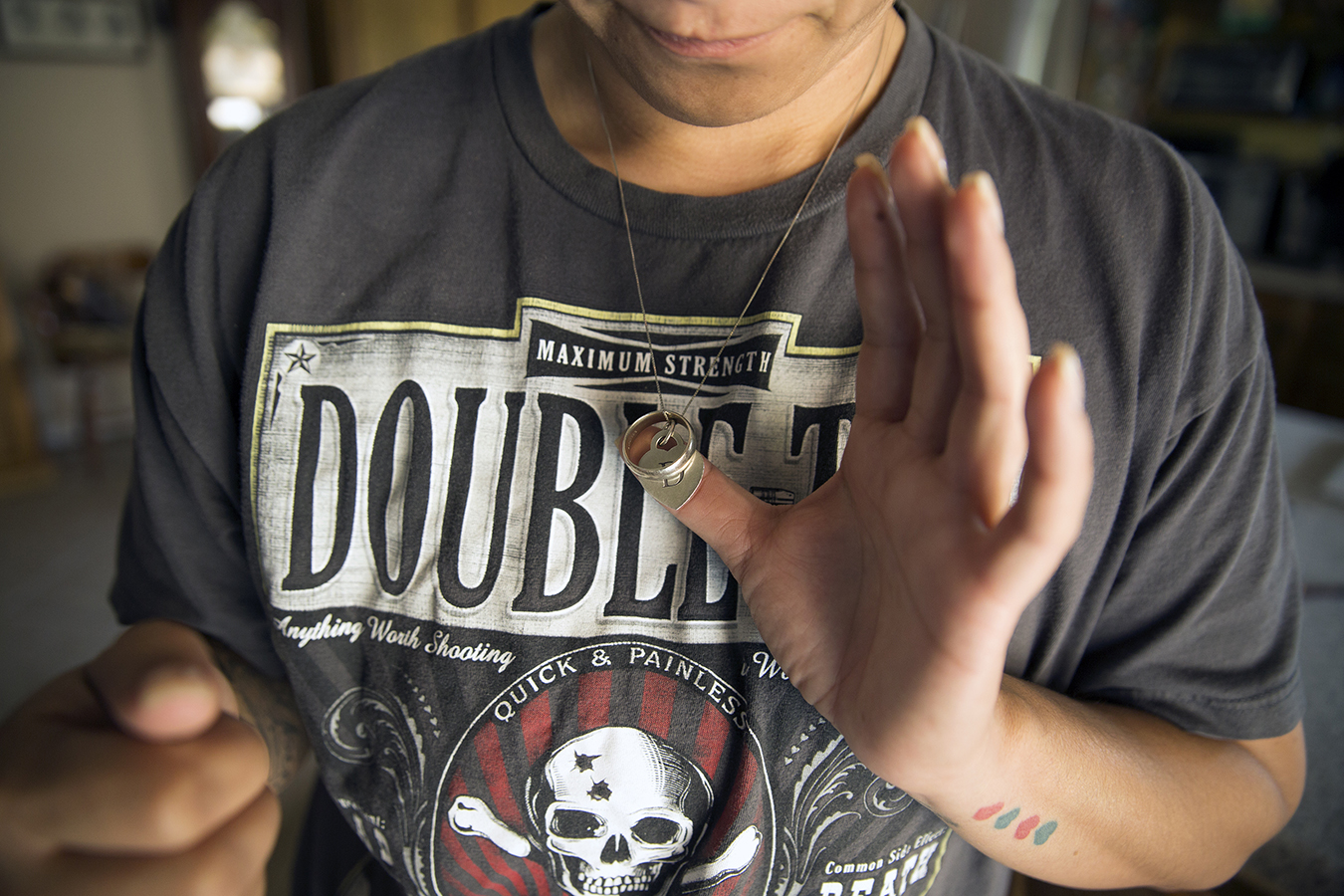
Monique Lang wears her husband’s wedding ring around her neck. They met when she was still in high school. She said he was an outgoing and funny 19-year-old, with beautiful green eyes and a sharp wit. (Brian Rinker for Kaiser Health News)
Zong told reporters the day after the shooting that he did not remember seeing Lang before. But the family told police he was seen on occasion between 2012 and 2015, according to their report, and that he received Suboxone for opioid addiction.
In an interview, Monique Lang said she once accompanied Cole to an appointment. She didn’t like the atmosphere, she said, and didn’t understand how taking a medication with no other services would help her husband.
But that was history — or so the family thought. By last April, they believed Lang was sober, getting the support he needed at Aegis.
Another Clinic ‘Overwhelmed’
Zong told police he performed one final task on his clinic’s last day, with Cole Lang dying outside on the asphalt and squad cars en route: He wiped the blood from his battered face and agreed to write his remaining patient a prescription.
Although Zong — who also goes by the name Yon Yarn — remains licensed to practice with an unblemished osteopathic board record, he says he will not reopen his practice.
His departure created chaos as desperate people dependent on his prescriptions struggled to get help elsewhere.
“We were overwhelmed,” said Javier Moreno, regional clinic manager at Aegis. “We probably fielded a hundred, 200 calls from patients who were panicking — ‘I’m worried about relapse.’ ‘I don’t know what to do.’ ‘My prescription is expiring.’”
Even months after Cole Lang’s death, neighbors said patients still showed up at Zong’s door, with the scrawled “Closed” sign on it, hoping to find that the doctor was in.



